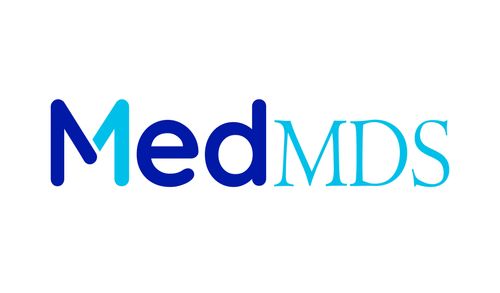The 20th Century saw the emergence of many diseases that have since become a major part of our lives. Despite this, there are several ‘forgotten diseases’ that have had a large impact on our lives that have been largely overlooked. In this blog, we will take a look at the forgotten diseases of the 20th Century and the impact they have had on us today. It’s time to give these forgotten diseases the attention they deserve.
Introduction to Forgotten Diseases of the 20th Century
Have you ever heard of diseases like leprosy, polio, or tuberculosis? These are just a few examples of the forgotten diseases of the 20th century that had a significant impact on society. While these diseases may not be as prevalent today, they have left a lasting impact on our healthcare system and the way we approach public health. Leprosy, for instance, was once considered a highly stigmatized disease that forced individuals to live in isolation. Today, we have a better understanding of the disease and how it spreads, which has led to more effective treatments and a decrease in the number of cases worldwide. Polio, on the other hand, was once a widespread disease that caused paralysis and even death. Thanks to the development of a vaccine, polio has been eradicated in many parts of the world. However, there are still areas where the disease persists, highlighting the importance of continued efforts to combat these forgotten diseases. By learning about these diseases and their impact on society, we can better understand the importance of public health initiatives and the role they play in keeping us all safe.
What Were Some of These Diseases?
It’s easy to forget about diseases that were prevalent in the past, especially when we have vaccines and treatments readily available today. However, it’s important to remember the impact these diseases had on our society and how they shaped our healthcare system. Some of the forgotten diseases of the 20th century include polio, tuberculosis, and smallpox. Polio was a highly contagious virus that caused paralysis and even death in some cases. It wasn’t until the development of the polio vaccine in the 1950s that the disease was finally brought under control. Tuberculosis, also known as TB, was another deadly disease that affected the lungs and spread through the air. It wasn’t until the 1940s that antibiotics were developed to effectively treat TB. Smallpox was a highly contagious virus that caused a severe rash and often led to death. It wasn’t until the 1970s that the World Health Organization declared smallpox eradicated thanks to a global vaccination campaign. These diseases may be forgotten, but their impact on our healthcare system and society is still felt today.
How Did They Affect People in the 20th Century?
It’s hard to imagine just how much the forgotten diseases of the 20th century affected people at the time. Diseases like polio, tuberculosis, and smallpox were rampant, causing widespread fear and devastation. But it wasn’t just the physical toll that these diseases took on people – they also had a profound impact on society as a whole. For example, the fear of contracting polio led to the closure of public pools and other gathering places, while the fight against tuberculosis spurred the development of new treatments and public health initiatives. And let’s not forget about the impact of smallpox – the eradication of this disease is considered one of the greatest public health achievements in history. While we may not think about these diseases much today, their impact is still felt in the way we approach public health and disease prevention. So the next time you get a vaccine or wash your hands, remember that you’re benefiting from the lessons of the past.
What Are the Long-Term Impacts of These Diseases Today?

It’s easy to forget about diseases that we don’t see or hear about on a regular basis, but the long-term impacts of these forgotten diseases are still felt today. Many of these diseases, such as polio and tuberculosis, can cause lifelong disabilities and chronic health problems. In addition, the stigma surrounding certain diseases, such as HIV/AIDS, can lead to discrimination and social isolation for those living with the disease. The lack of resources and attention given to these diseases in the past has also had a lasting impact on global health, with many countries still struggling to provide adequate healthcare and disease prevention measures. It’s important to remember that these diseases are not just a thing of the past, and that continued efforts are needed to address their long-term impacts and prevent their resurgence. By raising awareness and supporting research and healthcare initiatives, we can work towards a healthier and more equitable future for all.
How Can We Help Those Who Have Been Affected by Forgotten Diseases?
It’s heartbreaking to think about the millions of people around the world who have been affected by forgotten diseases. These illnesses may not be in the headlines every day, but they are still causing immense suffering. So, what can we do to help? The first step is to educate ourselves and others about these diseases and their impact. By raising awareness, we can help to reduce stigma and encourage more funding for research and treatment. We can also support organizations that are working to combat these diseases, whether through donations or volunteering our time. Another important way to help is to advocate for better healthcare policies and access to treatment for those who need it most. Finally, we can offer our support and compassion to those who have been affected by these diseases. Whether it’s through volunteering at a local clinic or simply being a listening ear for someone who is struggling, we can all make a difference in the lives of those who have been impacted by forgotten diseases.
Conclusion: The Impact of Forgotten Diseases on Us Today
In conclusion, the impact of forgotten diseases on us today cannot be ignored. Despite the significant progress made in healthcare, many of these diseases continue to affect millions of people worldwide. The lack of attention and resources towards these diseases has resulted in a significant burden on healthcare systems and affected individuals. It is crucial that we continue to raise awareness and invest in research towards finding cures and treatments for these diseases. By doing so, we can help improve the quality of life for those affected and prevent the spread of these diseases in the future. It is also essential that we prioritize equitable access to healthcare for all individuals, regardless of their socio-economic status or geographic location. Together, we can work towards eradicating these forgotten diseases and creating a healthier world for all.




